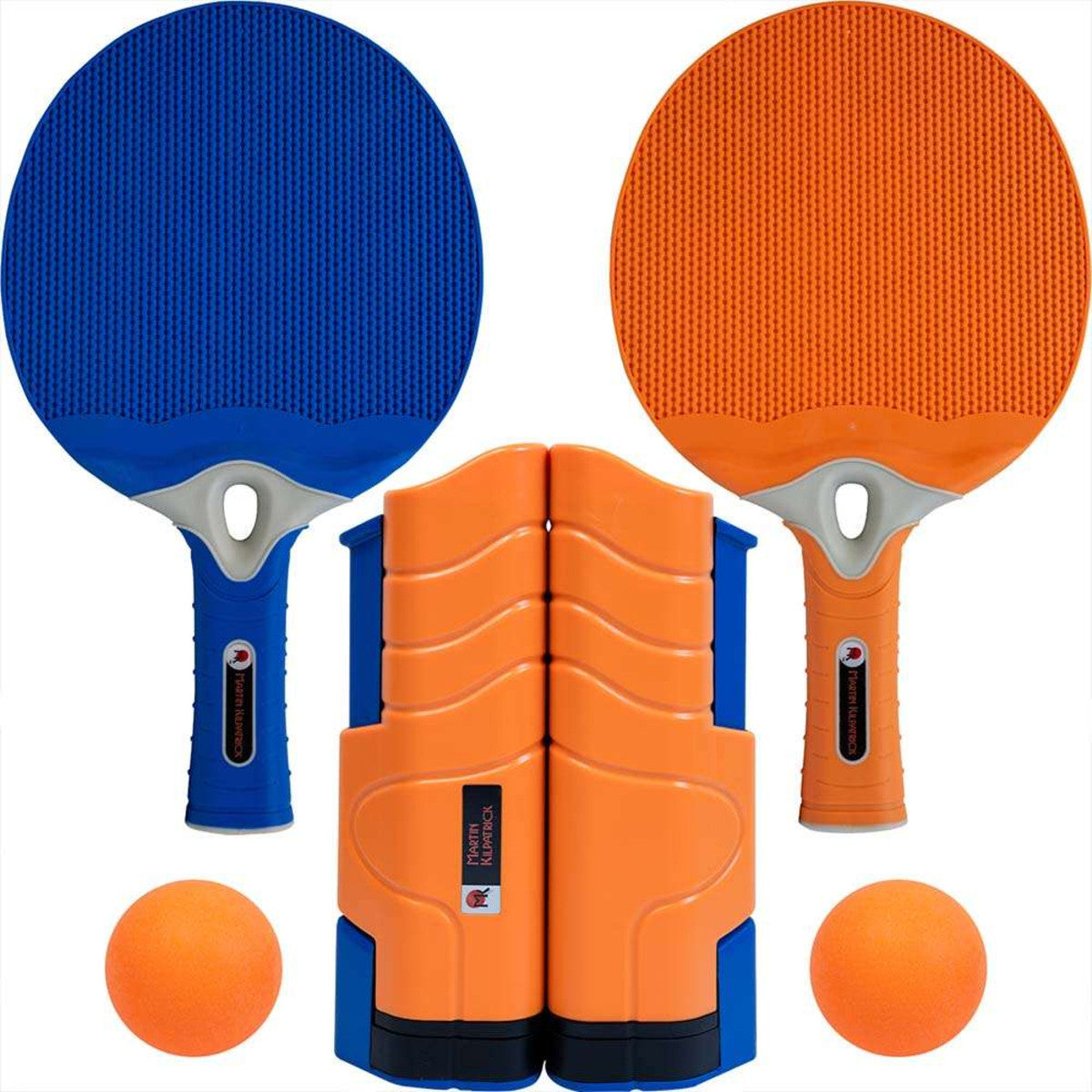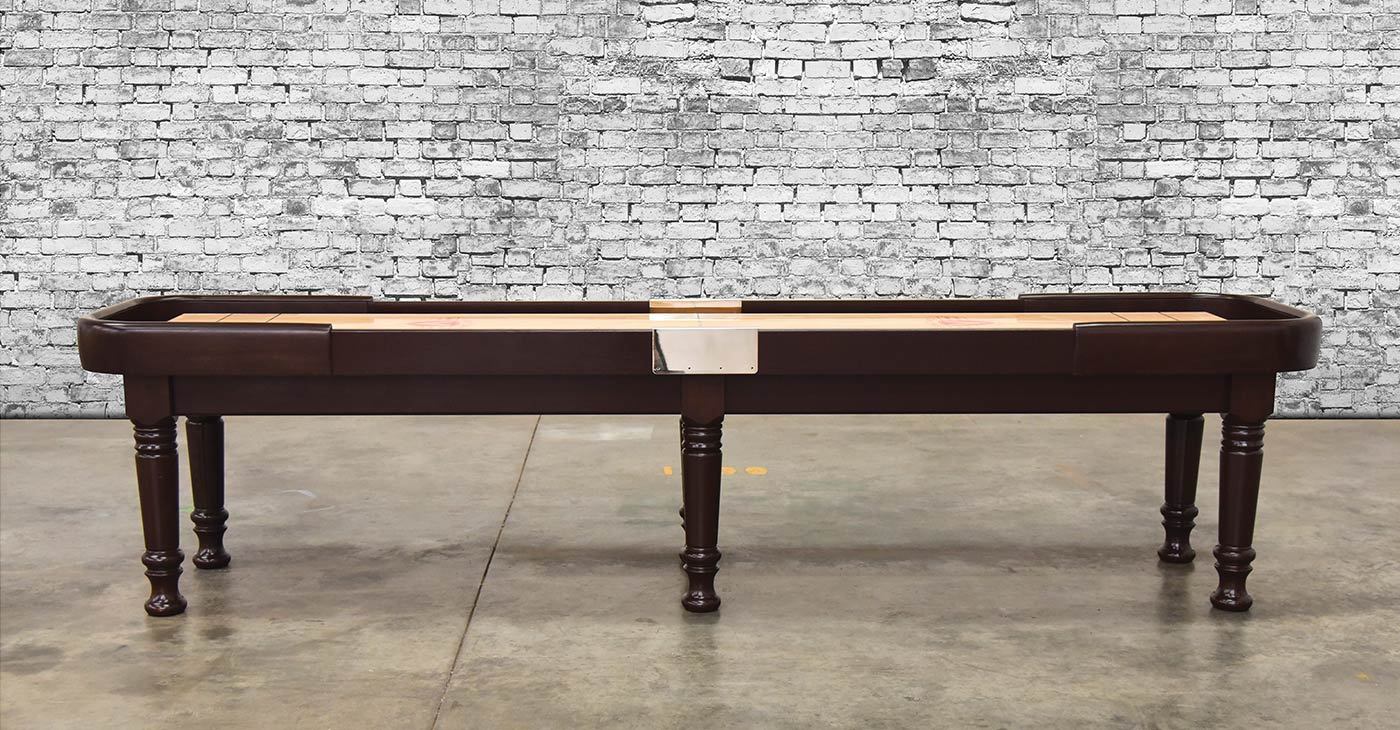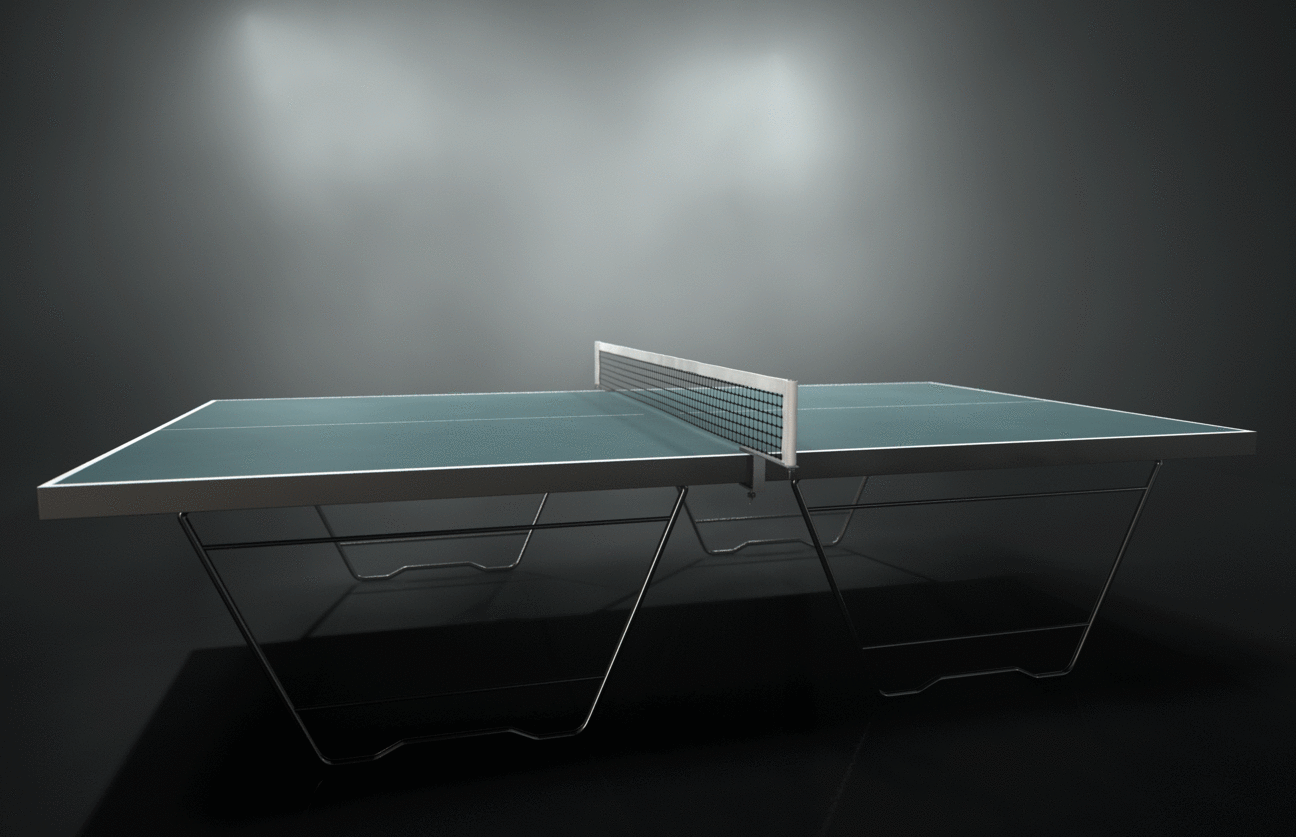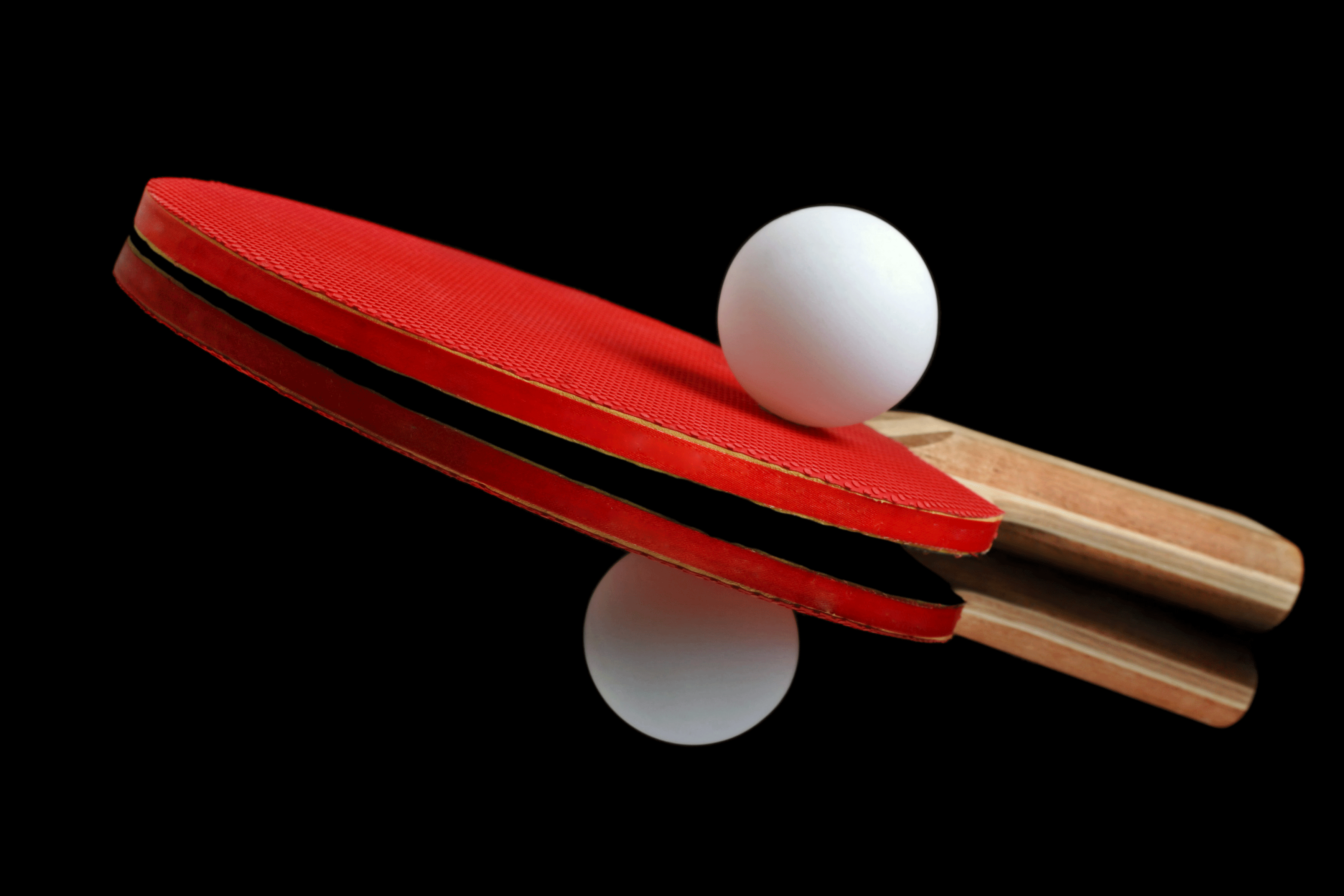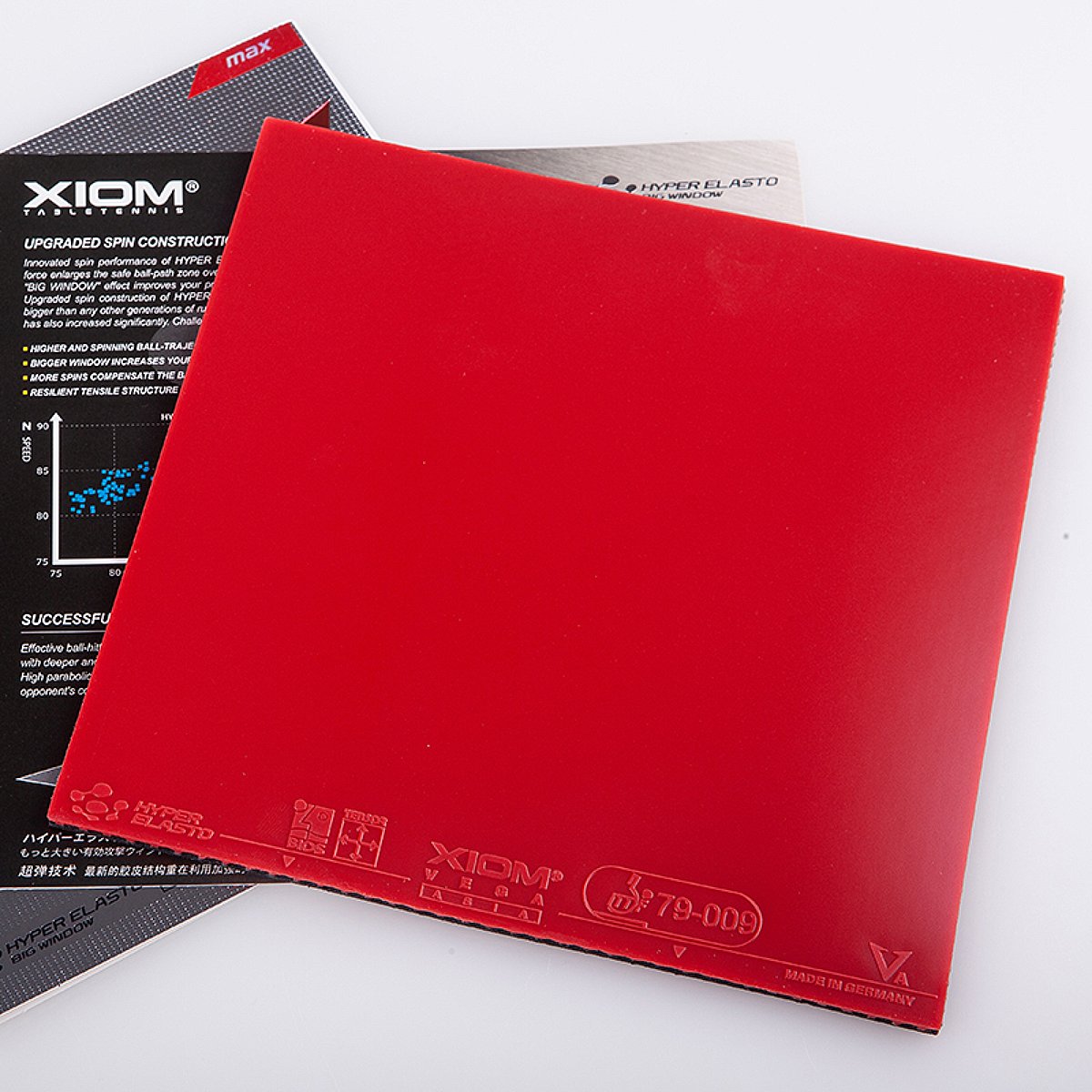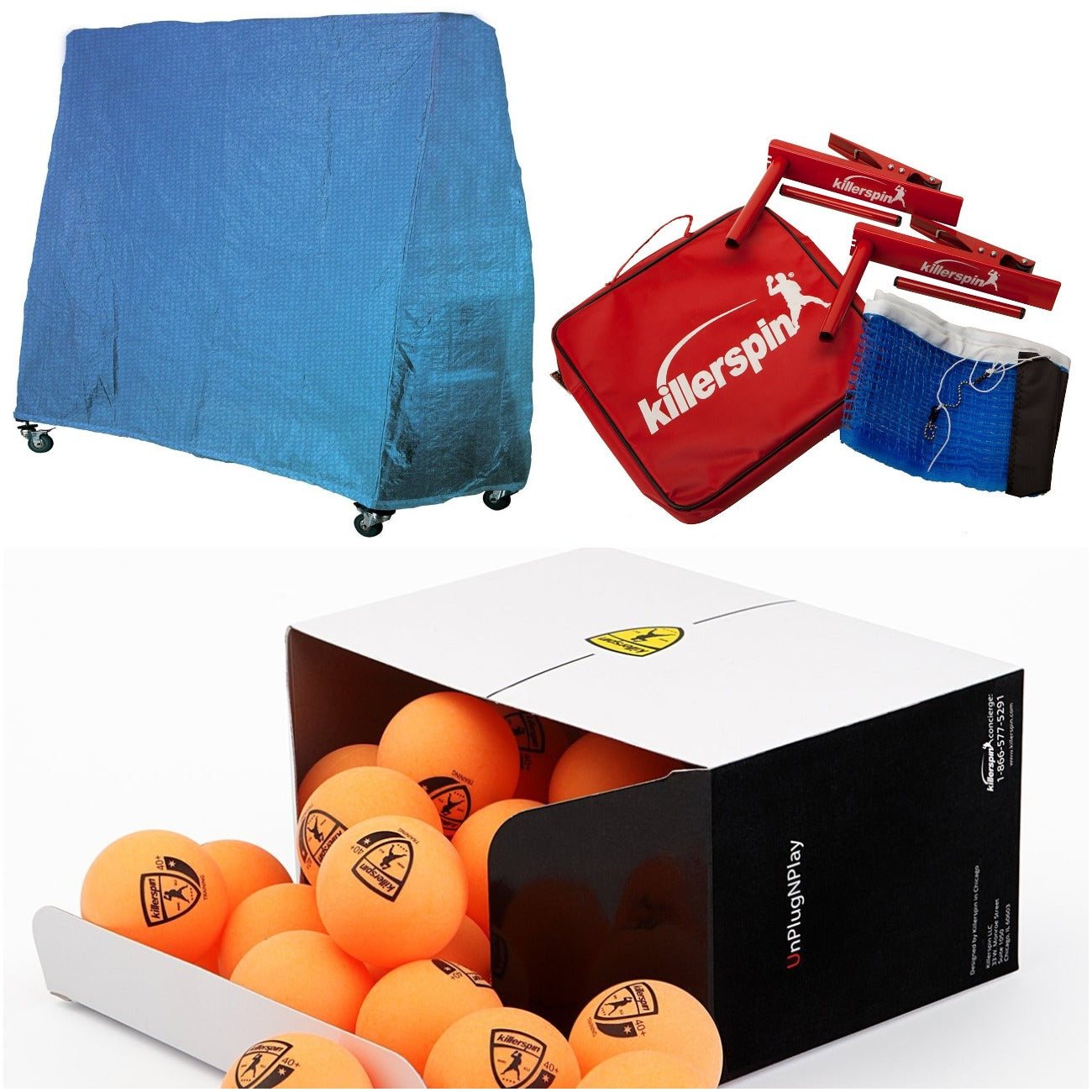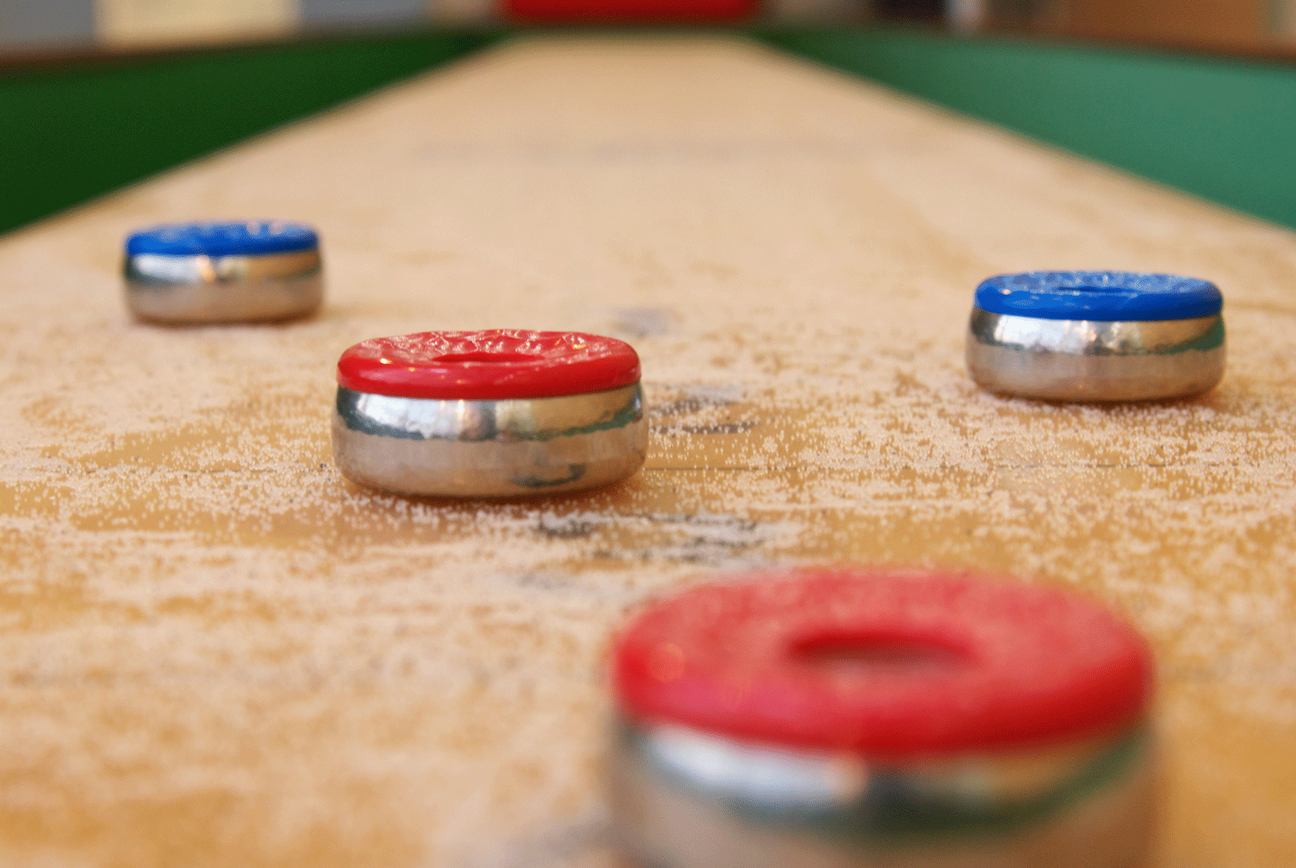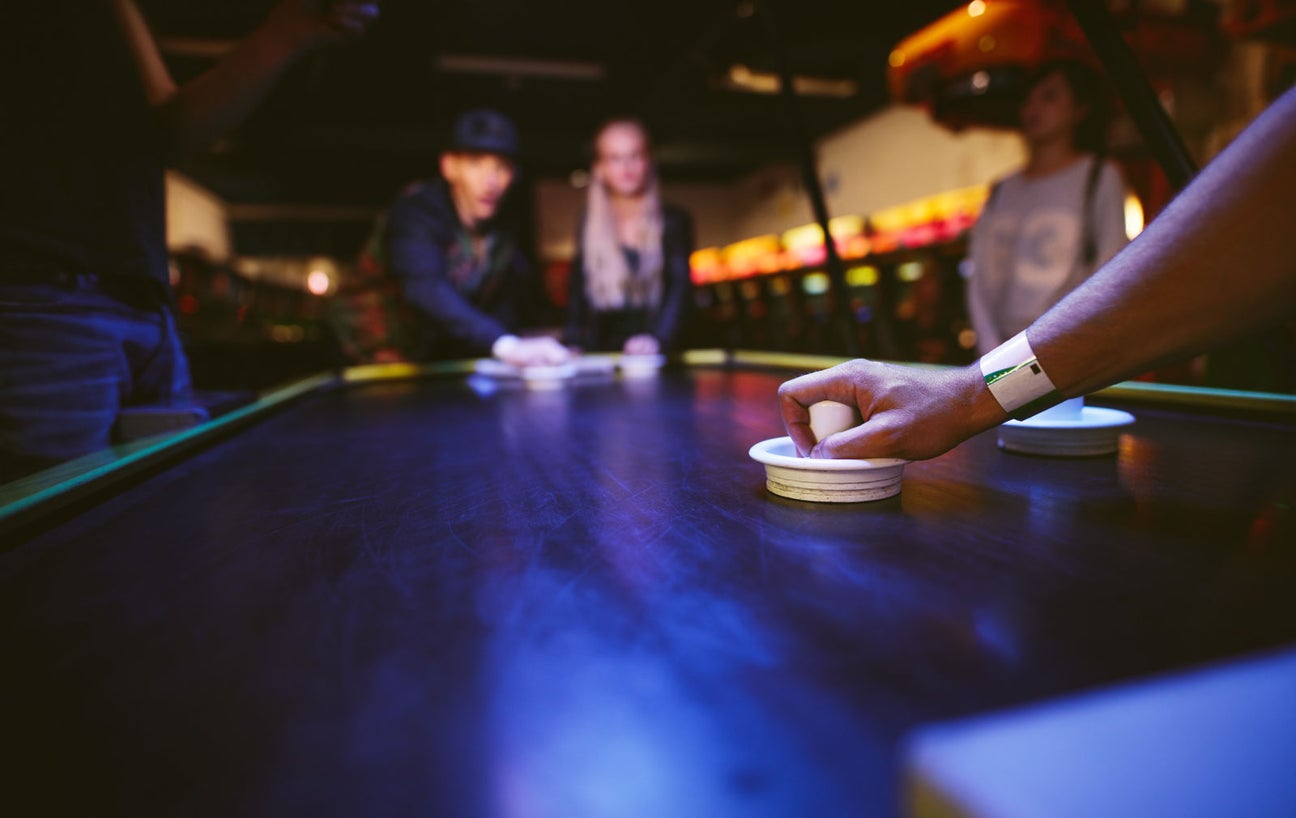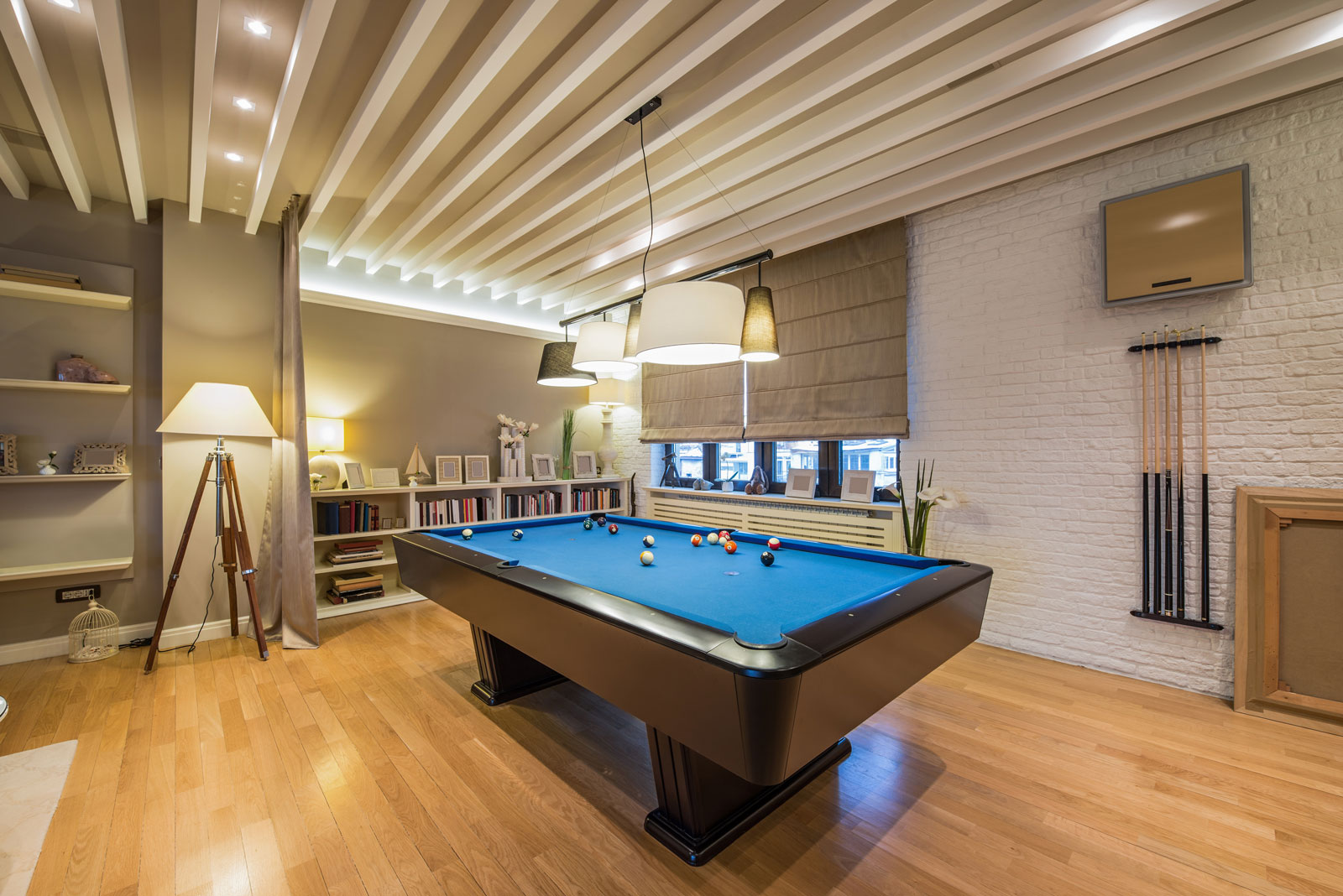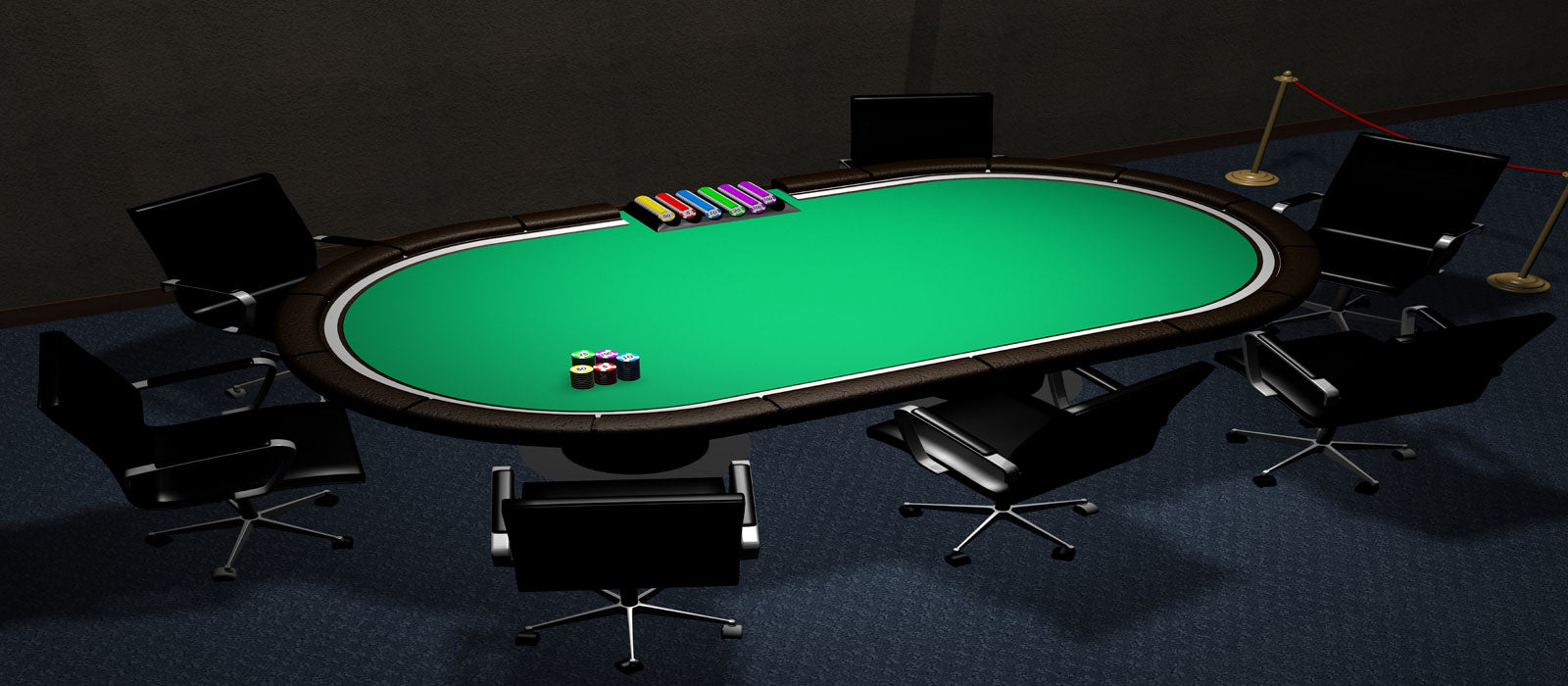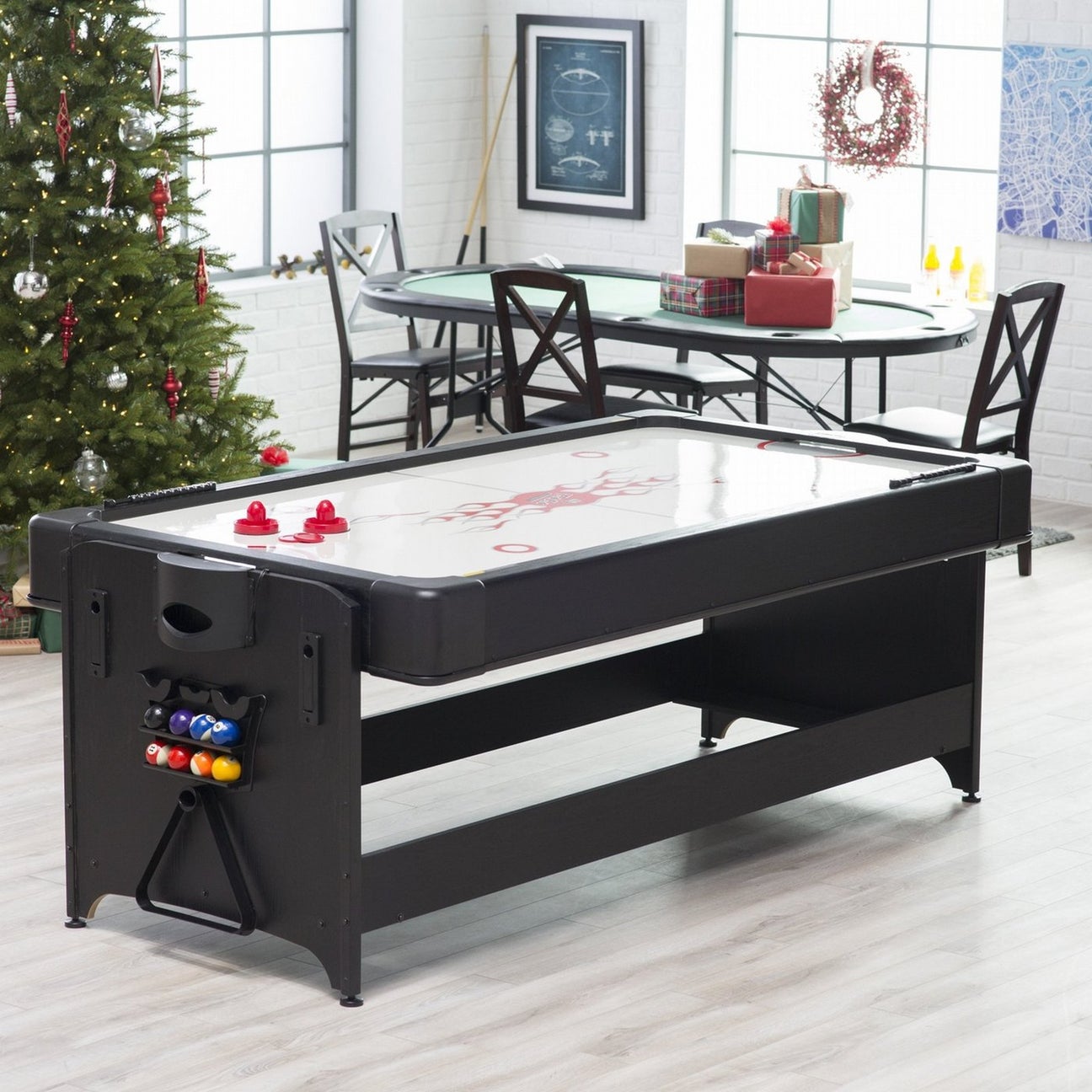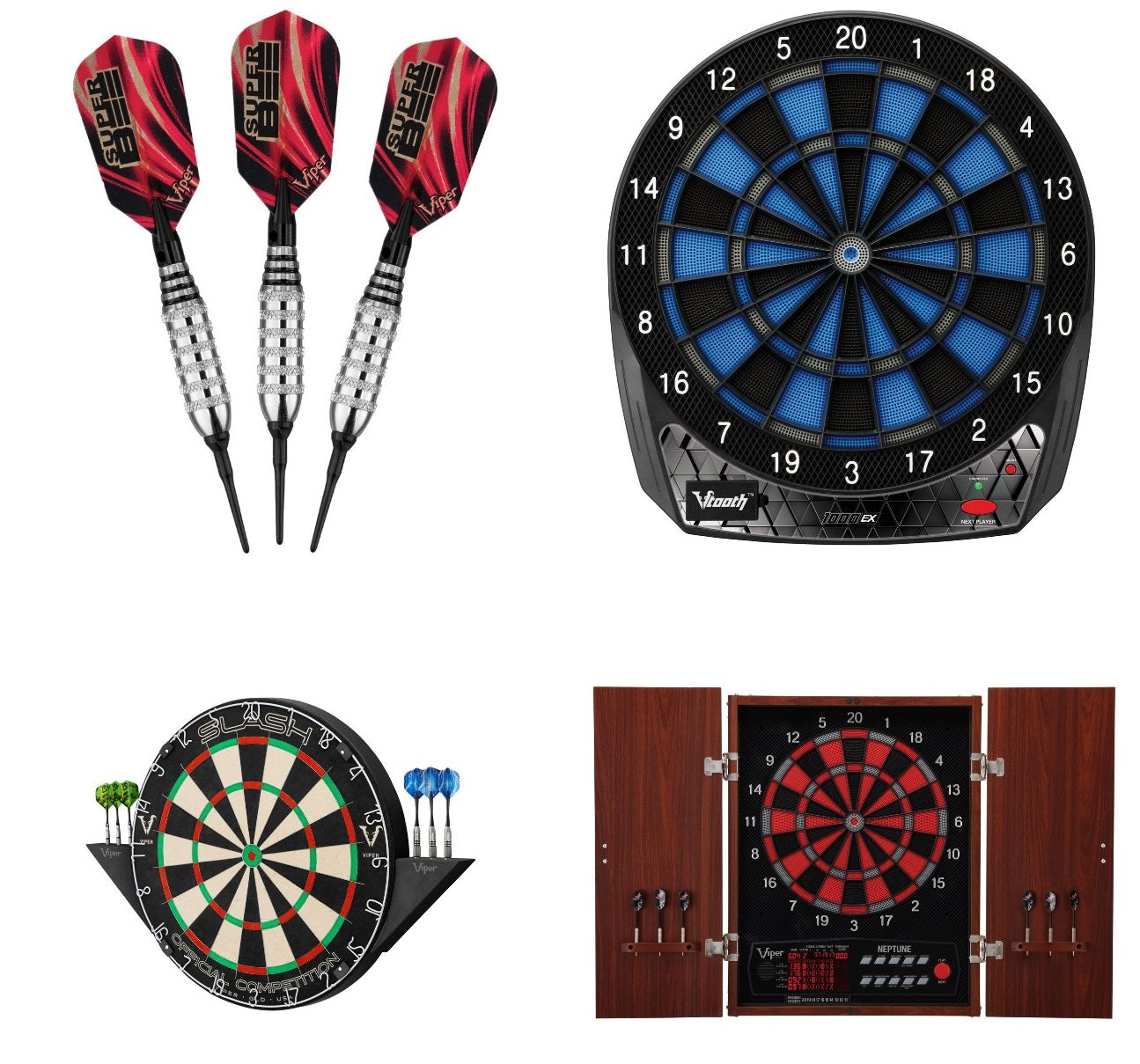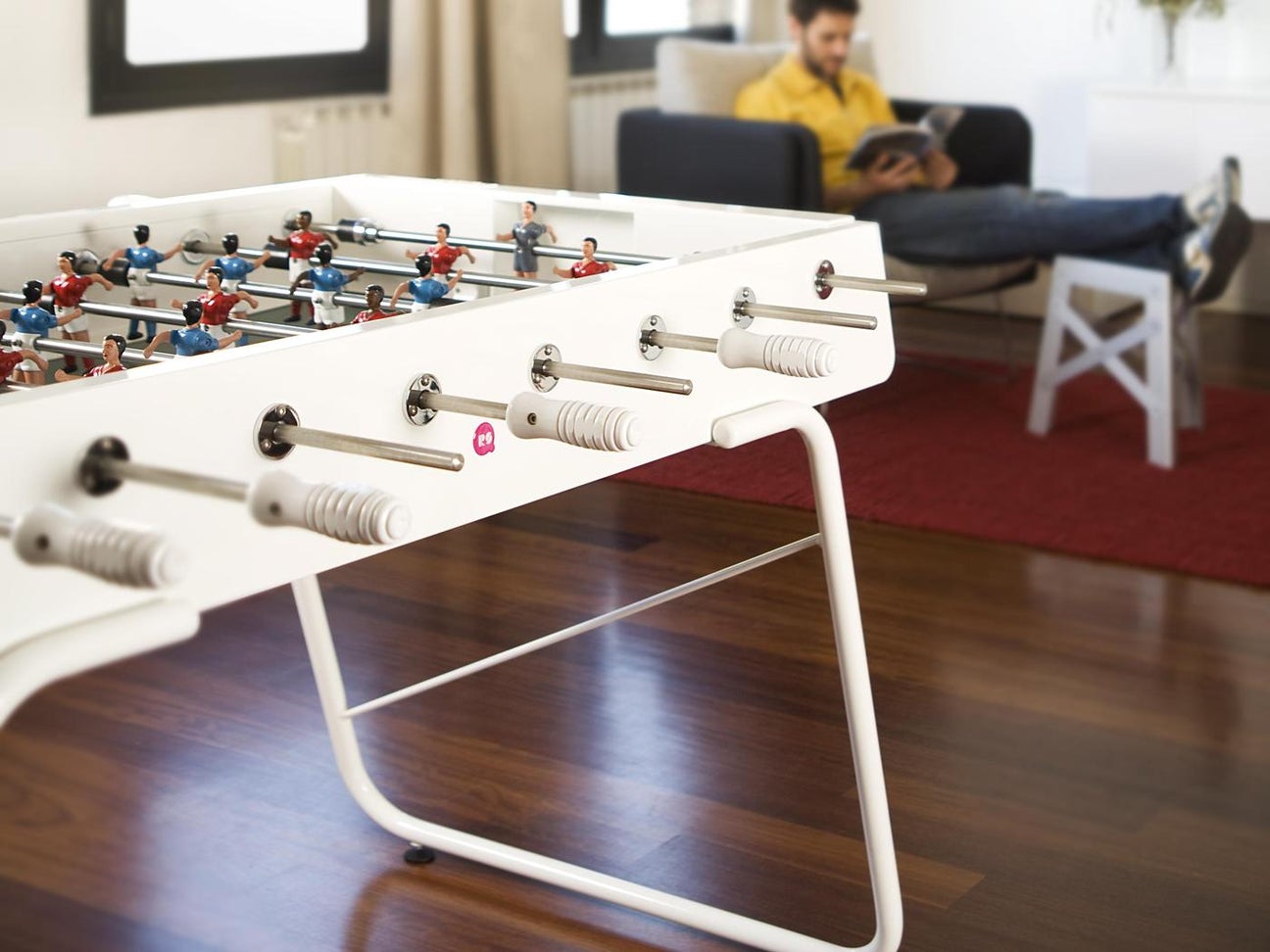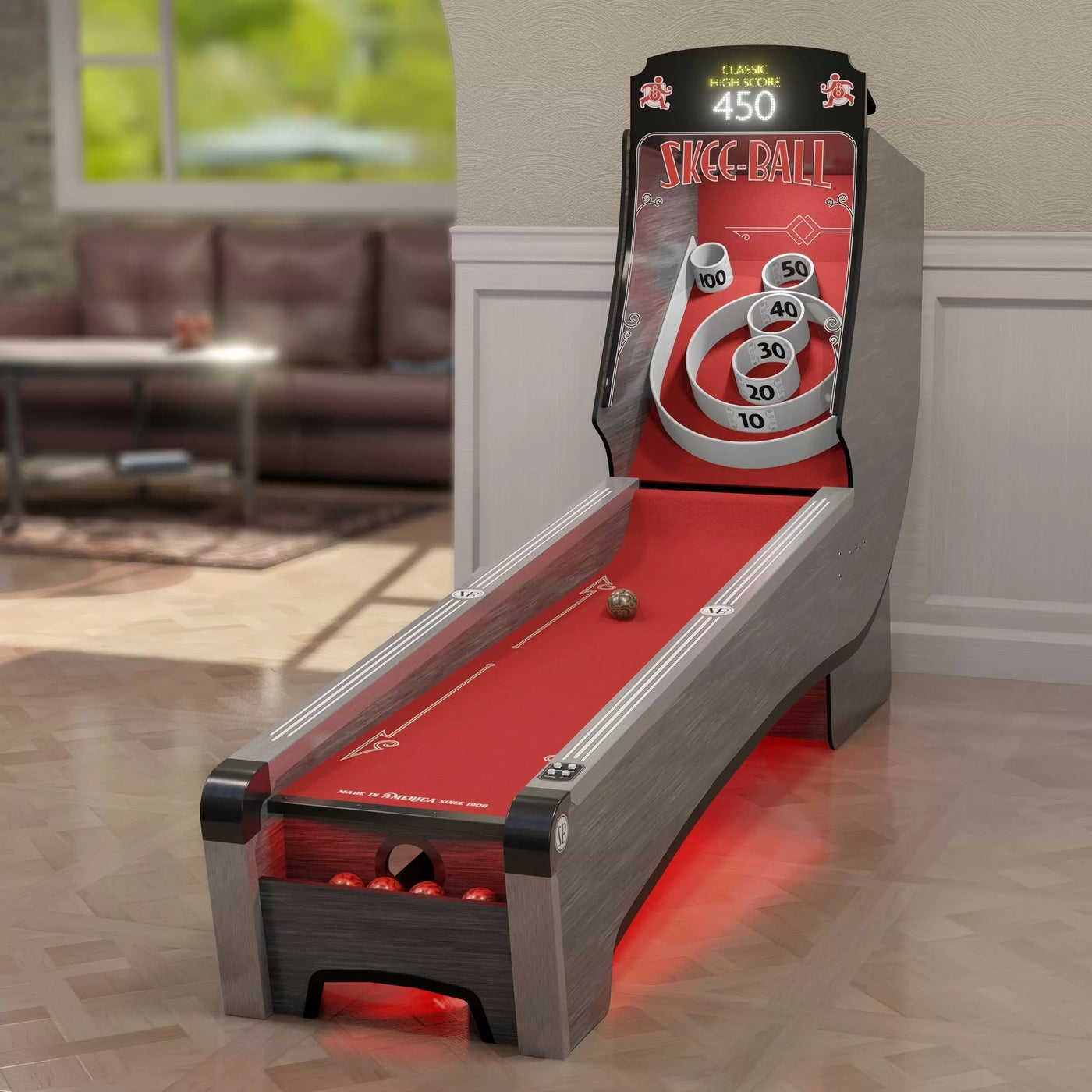The Ultimate Ping Pong Table Buyer's Guide (Updated for 2024)
Introduction
At eTableTennis.com, we aim to provide our customers with a unique and valuable experience. Ping pong, which is also called table tennis, is a game that is loved around the world and one that many wish to enjoy in their home, office, or rec league. However, selecting the right ping pong table can be a daunting task for many people which is why we've created this informative ping pong table buyer's guide.
Table tennis has come a long way since its humble beginnings as a simple after-dinner game. The origins of table tennis can be traced back to Victorian England in the 1880s. It started as an after-dinner game played by upper-class Victorians using improvised equipment. They would use books as paddles and a rounded cork from a champagne bottle as the ball. The game was initially called "whiff-whaff" and was played on dining tables.
Table tennis is now played in over 200 countries and has a massive following worldwide. It is particularly popular in Asia, where it is considered a national sport in countries like China, Japan, and South Korea. The sport continues to evolve, with new techniques and strategies being developed by players at all levels.
It has evolved into a highly competitive sport with a rich history and a global following. Table tennis is not just a game; it is a sport that offers a wide range of benefits. From improving physical fitness and mental acuity to providing stress relief and social interaction, table tennis has something to offer for everyone. Whether you play it casually with friends or aspire to be a professional player, table tennis offers endless hours of fun and excitement.
What are the Key Features of a Ping Pong Table?
A ping pong table, also known as a table tennis table, is a specialized piece of equipment used for playing the sport of table tennis. It consists of a flat surface, usually made of wood or composite materials, divided into two halves by a net. The table is rectangular in shape, measuring 9 feet long, 5 feet wide, and 30 inches high.
When it comes to purchasing a ping pong table, there are several important features to keep in mind. Whether you're a casual player or a serious competitor, these features can greatly impact your playing experience. Let's explore the key factors to consider:
Table Thickness
The thickness of the table surface is crucial for a good bounce. Look for a table with a minimum thickness of ¾ inch (19mm).

Thicker tables provide a more consistent and reliable bounce, allowing for better gameplay.
Frame Construction
A sturdy frame is essential for durability and stability. Opt for tables with strong metal frames that can withstand intense gameplay and resist warping over time.

A solid frame ensures that the table remains level and doesn't wobble during intense rallies.
Surface Coating
The surface coating of a ping pong table affects the ball's grip and the speed of play. Tables with a high-quality coating provide better ball control and a more consistent bounce. Look for tables with a smooth and anti-glare finish for optimal playing conditions.

When it comes to ping pong, the color of the table surface may not be the first thing that comes to mind. However, the color of the table can have a significant impact on the game. In this blog post, we will explore the different ping pong table surface colors and their effects on gameplay.
Ping pong tables come in a variety of colors to cater to different playing environments and lighting conditions. The color of the table surface can affect the visibility of the ball, which in turn can impact the gameplay.
The two most common ping pong table surface colors are green and blue. These colors have been widely adopted in professional tournaments and are the standard choices for most players.
The green ping pong table surface is the traditional color used in the sport. It provides a good contrast with the white ball, making it easier for players to track the ball's movement. The green color also reduces eye strain, allowing players to focus on the game for longer periods.
The blue ping pong table surface is a relatively newer addition to the sport. It offers similar benefits to the green surface in terms of contrast and reduced eye strain. Some players find the blue color to be more visually appealing, which can contribute to a positive playing experience.
While green and blue are the most common colors, ping pong tables can also come in other colors such as black, red, and gray. These colors are often used in recreational settings or for aesthetic purposes. However, it's important to note that these colors may not provide the same level of visibility and contrast as green and blue.
The ping pong table surface color can have a subtle impact on gameplay, especially at the professional level. Some players may have a slight preference for one color over another, depending on their playing style and personal preferences. However, for most recreational players, the color of the table surface is unlikely to significantly affect their game.
When choosing a ping pong table, it's important to consider the color of the table surface. Green and blue are the most common and recommended colors, offering good visibility and reduced eye strain. Other colors can be used for recreational purposes, but may not provide the same level of visibility and contrast. Ultimately, the choice of color comes down to personal preference and the playing environment.
Foldability and Mobility
If space is a concern, consider a table that can be easily folded and stored. Look for tables with a reliable folding mechanism and wheels for effortless transportation.

This feature allows you to quickly set up or store the table when needed.
Safety Features
Safety should always be a priority, especially if you have children playing. Look for tables with safety features such as locking mechanisms to prevent accidental folding and adjustable feet to ensure stability on uneven surfaces.
Playback Mode
If you enjoy practicing alone, a table with a playback mode is a great feature. This allows you to fold up one side of the table to create a backboard, enabling you to practice your shots without a playing partner.

A playback table tennis table is a type of table tennis table that is designed for solo practice. It allows players to practice their skills and improve their game even when they don't have a partner to play with. This type of table is also known as a self-play table or a solo practice table.
A playback table tennis table is similar to a regular table tennis table, but it has a unique feature that allows one half of the table to be folded up. This folded half acts as a backboard, allowing the player to hit the ball against it and receive it back, simulating a real game situation.
When practicing alone, the player can fold up one half of the table and position themselves on the other side. They can then hit the ball against the backboard and practice their shots, footwork, and technique. The ball will bounce back from the backboard, allowing the player to continue practicing without the need for a partner.
Using a playback table tennis table offers several benefits for players:
-
Solo practice: With a playback table tennis table, players can practice their skills and improve their game even when they don't have a partner available. This allows them to work on their technique, footwork, and shot placement.
-
Consistent ball return: The backboard of the playback table tennis table provides a consistent ball return, allowing players to practice their shots and receive the ball back in a predictable manner.
-
Versatility: Playback tables can be used for both solo practice and regular gameplay. Players can easily fold down the backboard and use the table for regular matches when they have a partner.
-
Space-saving: Playback tables are often designed to be compact and foldable, making them ideal for players who have limited space for a full-sized table tennis table.
Overall, a playback table tennis table is a valuable tool for players who want to improve their skills and enjoy the game even when they don't have a partner to play with. It provides a convenient and effective way to practice and enhance various aspects of the game.
Accessories
Consider what accessories are included with the table. Some tables come with paddles, balls, and a net, saving you the hassle of purchasing them separately. Additionally, check if the net is easy to set up and adjust.
When buying a ping pong table, it's important to consider the table thickness, frame construction, surface coating, foldability, safety features, playback mode, and included accessories. By carefully evaluating these features, you can ensure an enjoyable and high-quality playing experience. So, go ahead and choose the perfect ping pong table that suits your needs and take your game to the next level!
How to Choose the Right Ping Pong Table?

When choosing a ping pong table, consider the following factors:
-
Table Size and Space: Measure the available space in your home or recreational area to ensure the table fits comfortably.
-
Ping Pong Table Usage: Determine whether you need a table for recreational play or professional tournaments. Professional-grade tables are more expensive but offer superior performance.
-
Table Thickness: Thicker table tops provide better ball bounce and are more durable.
-
Portability: If you need to move or store the table frequently, opt for a model with a folding design and wheels for easy transportation.
-
Budget: Ping pong tables more suitable for beginner and intermediate players tend to be anywhere from $200 to $1500 while ping pong tables for more advanced or professional players tend to be $1500+.
By considering these factors, you can find a ping pong table that suits your needs and enhances your table tennis experience.
When it comes to choosing the right ping pong table, there are several factors that you should consider. These factors will ensure that you make an informed decision and select a table that suits your needs perfectly.
Table Size and Space
One of the first things to consider is the size of the table and the space available in your home or playing area. Ping pong tables come in various sizes, so it's important to measure the space where you plan to set up the table. You should leave enough room around the table for players to move freely and for spectators to watch the game comfortably.
Choosing the right ping pong table size depends on your specific needs and available space. If you're a serious player or plan to participate in tournaments, a standard size table is the way to go. For those with limited space or beginners looking for a more compact option, a compact size table is a suitable choice. If you're simply looking for a fun and portable option, a mini size table will meet your needs.
Remember, regardless of the size you choose, it's important to consider the quality of the table, including the playing surface, frame, and stability. Investing in a high-quality table will enhance your playing experience and ensure long-lasting durability.
Now that you're familiar with the different sizes of ping pong tables, you can make an informed decision based on your preferences and requirements. Get ready to enjoy countless hours of thrilling ping pong matches!
Ping pong, also known as table tennis, is a popular sport enjoyed by people of all ages. Whether you're a casual player or a serious competitor, understanding the different sizes of ping pong tables is essential.
Regulation Size Ping Pong Tables

The standard size for a ping pong table, as defined by the International Table Tennis Federation (ITTF), is 9 feet long, 5 feet wide, and 2.5 feet high. This size ensures fair and consistent gameplay in professional tournaments and competitions.
Midsize Ping Pong Tables

For recreational purposes or limited space, midsize ping pong tables are a great option. These tables are smaller than regulation size tables and typically measure 4.5 feet long, 2.5 feet wide, and 2.5 feet high. They provide a smaller playing area but still allow for enjoyable gameplay.
Mini Ping Pong Tables

If you have even less space or want to play ping pong on the go, mini ping pong tables are the way to go. These compact tables are perfect for kids or casual players and can be easily set up on a dining table or any flat surface. Mini ping pong tables usually measure around 3 feet long, 2 feet wide, and 2 feet high.
|
The standard size ping pong table is the most commonly used in professional tournaments and competitions. It provides players with ample space to showcase their skills and allows for a fair and balanced gameplay. The dimensions of a standard size table meet the requirements set by the International Table Tennis Federation (ITTF), the governing body of table tennis.
When to consider purchasing a compact size ping pong table?
A compact size ping pong table is a great option for those who have limited space in their homes or recreational areas. It offers a smaller playing surface without compromising the overall playing experience. Compact tables are also popular among beginners and casual players who want to enjoy the game without the need for a full-sized table.
Mini size ping pong tables are perfect for young children or those who want to play in smaller spaces, such as offices or dorm rooms. They are lightweight, portable, and easy to store. While mini tables may not provide the same level of gameplay as larger tables, they offer a fun and convenient option for recreational play.
How much space should be left around the ping pong table?
To ensure a comfortable playing experience, it is recommended to leave a minimum of 3 feet (0.91 meters) of space around the ping pong table. This allows players to move freely and retrieve the ball without any obstructions. However, if you have enough space, it is even better to leave 5 feet (1.52 meters) of space on each side and 8 feet (2.44 meters) of space behind each end of the table.
In addition to the space around the table, it is important to consider the clearance requirements. The area above the ping pong table should be free from any obstructions, such as light fixtures or low ceilings. A minimum clearance of 9 feet (2.74 meters) is recommended to allow for comfortable gameplay.
What if I have limited space?
If you have limited space, there are options available to accommodate a ping pong table. You can consider purchasing a smaller-sized table, such as a mini or compact table, which usually have dimensions of 7 feet (2.13 meters) in length and 3.5 feet (1.07 meters) in width. These tables require less space but still provide an enjoyable playing experience.
Ping Pong Table Usage
Indoor Ping Pong Tables versus Outdoor Ping Pong Tables
Another important consideration is whether you need an indoor or outdoor table. Indoor tables are designed for indoor use and are not suitable for outdoor environments. On the other hand, outdoor tables are built to withstand different weather conditions and can be used in your backyard or patio. Ping pong tables can be placed outdoors, but it is important to choose a table specifically designed for outdoor use. Outdoor tables are made with weather-resistant materials that can withstand the elements. When placing a ping pong table outdoors, make sure there is enough space and clearance as mentioned earlier.
What are the key differences between indoor and outdoor ping pong tables?
Indoor and outdoor ping pong tables may seem similar at first glance, but there are several important differences to consider. Whether you're a casual player or a serious competitor, understanding these distinctions can help you make the right choice when purchasing a ping pong table.
-
Material and Construction: One of the primary differences between indoor and outdoor ping pong tables lies in their construction. Indoor tables are typically made of high-quality wood, such as particleboard or medium-density fiberboard (MDF), which provides a consistent and smooth playing surface. On the other hand, outdoor tables are constructed using weather-resistant materials like aluminum composite or synthetic laminate. These materials are designed to withstand various weather conditions, including rain, sun exposure, and temperature fluctuations.
-
Tabletop Thickness: The thickness of the tabletop also differs between indoor and outdoor tables. Indoor tables usually have a thicker playing surface, ranging from 19mm to 25mm. This thickness ensures a more even bounce and better ball control. Outdoor tables, on the other hand, have a thinner playing surface, typically around 4mm to 6mm. While this may result in a slightly less consistent bounce, it allows for better resistance against warping caused by weather conditions.
-
Surface Coating: Another significant difference is the surface coating applied to the tabletop. Indoor tables feature a smooth and matte finish, which helps the ball grip the surface and enables players to apply spin effectively. Outdoor tables, however, have a weatherproof coating that provides a slightly rougher texture. This texture helps to reduce glare caused by sunlight and prevents the ball from skidding on the surface due to moisture or humidity.
-
Frame and Undercarriage: The frame and undercarriage of indoor and outdoor tables are designed to withstand different environments. Indoor tables have a sturdy frame made of steel or wood, providing excellent stability and support. Outdoor tables, on the other hand, are built with materials that can resist rust and corrosion, such as galvanized steel or aluminum. Additionally, outdoor tables often have a more robust undercarriage to withstand wind and uneven surfaces.
-
Portability and Storage: While both indoor and outdoor tables can be folded for storage, outdoor tables are generally more portable. They are often equipped with wheels and a locking mechanism, making it easier to move them around and store them when not in use. Indoor tables, although foldable, are typically heavier and may require more effort to transport.
When choosing between an indoor and outdoor ping pong table, it's essential to consider your specific needs and playing environment. Indoor tables offer superior playing quality and are ideal for dedicated players or tournaments. Outdoor tables, on the other hand, are built to withstand the elements and provide flexibility for outdoor play. By understanding the differences outlined above, you can make an informed decision and enjoy countless hours of ping pong fun.
Tabletop Thickness
The thickness of the table tennis table directly impacts the bounce of the ball. A thicker table provides a more consistent and higher bounce, allowing for faster and more exciting gameplay. Thicker tables also tend to be more durable and resistant to warping over time.
What are the standard table tennis table thickness options?
Table tennis tables typically come in three standard thickness options: 12mm, 15mm, and 25mm.
-
12mm: This is the thinnest option available and is often found in recreational or budget-friendly tables. While a 12mm table may be suitable for casual play, it may not provide the same level of bounce and durability as thicker options.
-
15mm: A 15mm table is a popular choice for intermediate players. It offers a good balance between affordability and performance. The bounce on a 15mm table is generally consistent and suitable for most players.
-
25mm: If you're a serious table tennis player or looking for a professional-grade table, a 25mm table is the way to go. These tables provide the highest level of bounce and are used in official competitions. However, they are also more expensive.
Considerations when choosing table tennis table thickness
When deciding on the thickness of your table tennis table, there are a few factors to consider:
-
Skill level: Beginners and casual players may find a 12mm or 15mm table sufficient for their needs. Advanced players or those aspiring to compete at a higher level may prefer a 25mm table for optimal performance.
-
Budget: Thicker tables tend to be more expensive. Consider your budget and how much you are willing to invest in a table tennis table.
-
Space constraints: Thicker tables are generally heavier and may require more space for storage. Ensure you have enough room to accommodate the table.
Choosing the right thickness for your table tennis table is an important decision that can greatly impact your playing experience. Consider your skill level, budget, and space constraints when making your choice. Whether you opt for a 12mm, 15mm, or 25mm table, remember to select a high-quality table from a reputable manufacturer to ensure durability and performance.
Portability and Storage
If you plan to move or store the table frequently, consider a table that is easy to fold and transport. Some tables come with wheels for easy maneuverability, while others can be folded and stored in a compact space.
Benefits of a Portable Table Tennis Table
-
Convenience: With a portable table, you can play table tennis wherever you want, whether it's in your backyard, a park, or even indoors. You're not limited to a specific location.
-
Socializing: Portable tables enable you to bring the fun of table tennis to gatherings and events. It's a great way to engage with friends, family, and colleagues, fostering social interaction and friendly competition.
-
Training and Practice: If you're a serious player, a portable table allows you to practice and improve your skills whenever and wherever you want. You can easily set it up in your garage, basement, or any available space.
When searching for the right table tennis table, keep an eye out for the word "Rollaway" in the product title. Quite often, ping pong tables that come with wheels and are considered portability are known as "rollaway tables".
Budget
The price of table tennis tables can vary significantly depending on the factors mentioned above. Here's a general breakdown of the price range:
-
Entry-level tables: These tables are typically priced between $200 and $500. They are suitable for recreational players and beginners.
-
Mid-range tables: Tables in this range usually cost between $500 and $1500. They offer better quality and performance compared to entry-level tables.
-
High-end tables: High-end tables, often used in professional tournaments, can range from $1500 or more. These tables provide exceptional playability and durability.
Several factors contribute to the price of a table tennis table:
-
Quality of materials: High-quality tables are often made of durable materials like solid wood or composite surfaces, which can increase the price.
-
Thickness of the playing surface: Thicker playing surfaces provide better bounce and playability, but they also tend to be more expensive.
-
Table size: Full-size tables, which are regulation size, are generally more expensive than smaller, compact tables.
-
Features: Tables with additional features like adjustable height, playback mode, or built-in storage will typically have a higher price tag.
-
Brand reputation: Established brands with a reputation for quality and performance often come with a higher price.
Ping Pong Table Brands We Recommend!
When it comes to choosing a ping pong table, it's important to consider the brand. Some brands have established a reputation for producing high-quality tables that are durable, provide excellent playing surfaces, and offer great value for money. Here are some of the best ping pong table brands:
Butterfly is a well-known brand in the world of table tennis. They offer a wide range of tables that cater to players of all skill levels. Butterfly tables are known for their exceptional build quality, smooth playing surfaces, and innovative designs.
Whether you're a casual player or a professional, Butterfly has a table that will suit your needs. One of the key advantages of butterfly ping pong tables is their ability to enhance your playing experience. The tables are designed to meet the highest standards of playability, ensuring that you get the most out of every game. With their excellent bounce and responsive surface, butterfly ping pong tables allow you to showcase your skills and improve your game.
RS Barcelona ping pong tables are not your average ping pong tables. They are meticulously crafted using high-quality materials and cutting-edge technology to ensure the best playing experience.
Here are some key features that set them apart:
-
Design: RS Barcelona tables are not just functional, but they are also a work of art. Their sleek and modern design adds a touch of elegance to any space, making them a perfect addition to your home, office, or recreational area.
-
Durability: These tables are built to last. Made from premium materials, they can withstand intense gameplay and are resistant to wear and tear. You can enjoy countless hours of play without worrying about the table's durability.
-
Easy Assembly: Setting up an RS Barcelona ping pong table is a breeze. With their user-friendly design and clear instructions, you can have your table ready for action in no time.
-
Portability: Need to move your ping pong table? No problem! RS Barcelona tables are designed with portability in mind. They are lightweight and easy to transport, allowing you to take your game wherever you go.
-
Quality: RS Barcelona is known for its commitment to quality. Each table is meticulously inspected to ensure it meets the highest standards of craftsmanship and performance.
-
Innovation: RS Barcelona is constantly pushing the boundaries of ping pong table design. They are always looking for new ways to enhance the playing experience and create tables that are both functional and visually appealing.
-
Customer Satisfaction: RS Barcelona values its customers and strives to provide the best possible experience. From the moment you purchase a table to the after-sales support, they are dedicated to ensuring your satisfaction.
JOOLA is another popular brand that manufactures high-quality ping pong tables. They are known for their attention to detail and commitment to providing players with the best playing experience.



JOOLA tables are designed to be sturdy, durable, and provide consistent bounce. They offer a variety of tables that are suitable for both indoor and outdoor use.
STIGA is a brand that has been synonymous with table tennis for decades. They are known for their innovative designs and cutting-edge technology. STIGA tables are designed to provide excellent playing conditions and are often used in professional tournaments. Whether you're a recreational player or a serious competitor, STIGA has a table that will meet your requirements.
When it comes to choosing a ping pong table, the brand is an important factor to consider. Butterfly, RS Barcelona, JOOLA, and STIGA are all top brands that offer high-quality tables. Whether you're a casual player or a serious competitor, these brands have a table that will suit your needs and provide you with an excellent playing experience. To start your search for the right table, please view our table tennis table collection.
Ping Pong Table Delivery
Why is Ping Pong Table Delivery Important?
When you invest in a ping pong table, you want to ensure that the delivery process goes smoothly. Proper delivery is crucial to avoid any damage or inconvenience. Here are some expert tips to help you get your ping pong table delivered safely and efficiently:
-
Measure Doorways and Hallways: Prior to delivery, measure all doorways and hallways the table needs to pass through. Ping pong tables are often large and may require extra maneuvering to fit through narrow spaces. Knowing the dimensions will help you avoid any potential obstacles during the delivery process.
-
Clear the Pathway: Clear any obstacles along the pathway from the delivery truck to the designated room. Remove furniture, rugs, or any other items that may hinder the smooth transportation of the ping pong table. This will minimize the risk of accidents or damage to your property.
-
Inspect Upon Arrival: Once the ping pong table is delivered, carefully inspect it for any signs of damage. Check for any visible scratches, cracks, or misalignments. If you notice any issues, immediately notify the delivery personnel and document the damage for future reference.
Assembling Your New Ping Pong Table
If you've found the right ping pong table, it may need to be assembled. Before you start assembling your ping pong table, make sure you have the following tools:
- Phillips screwdriver
- Adjustable wrench
- Hammer
Step 1: Unpack and organize the parts
Start by unpacking all the parts of your ping pong table and organizing them according to the instruction manual. Make sure you have all the necessary components before proceeding.
Step 2: Attach the legs
Begin by attaching the legs to the table. Use the provided screws and a Phillips screwdriver to secure the legs firmly in place. Make sure the legs are evenly spaced and level.
Step 3: Install the playing surface
Next, carefully place the playing surface on top of the assembled frame. Align it properly and secure it using the screws provided. Use an adjustable wrench to tighten the screws, ensuring a stable playing surface.
Step 4: Attach the net and posts
Attach the net and posts to the table according to the manufacturer's instructions. Make sure the net is taut and at the correct height. This will ensure fair gameplay and prevent any disruptions during matches.
Step 5: Check for stability and levelness
Once you have assembled all the components, check the table for stability and levelness. Adjust the legs if necessary to ensure an even playing surface. Use a level to make sure the table is perfectly flat.
And there you have it! Your ping pong table is now assembled and ready for some exciting matches. Enjoy playing and improving your table tennis skills!
Now that you've read through the Ultimate Ping Pong Table Buyer's Guide, hopefully, you should have a better idea of how to go about selecting the right ping pong table for your home, office, or rec league. To get started, please see our ping pong table collection: Ping Pong Tables.
If you've read our buyer's guide, but still need some additional assistance, feel free to contact an eTableTennis.com team member via email at info@etabletennis.com or by live chat. Good luck in your ping pong table search and enjoy the game!
